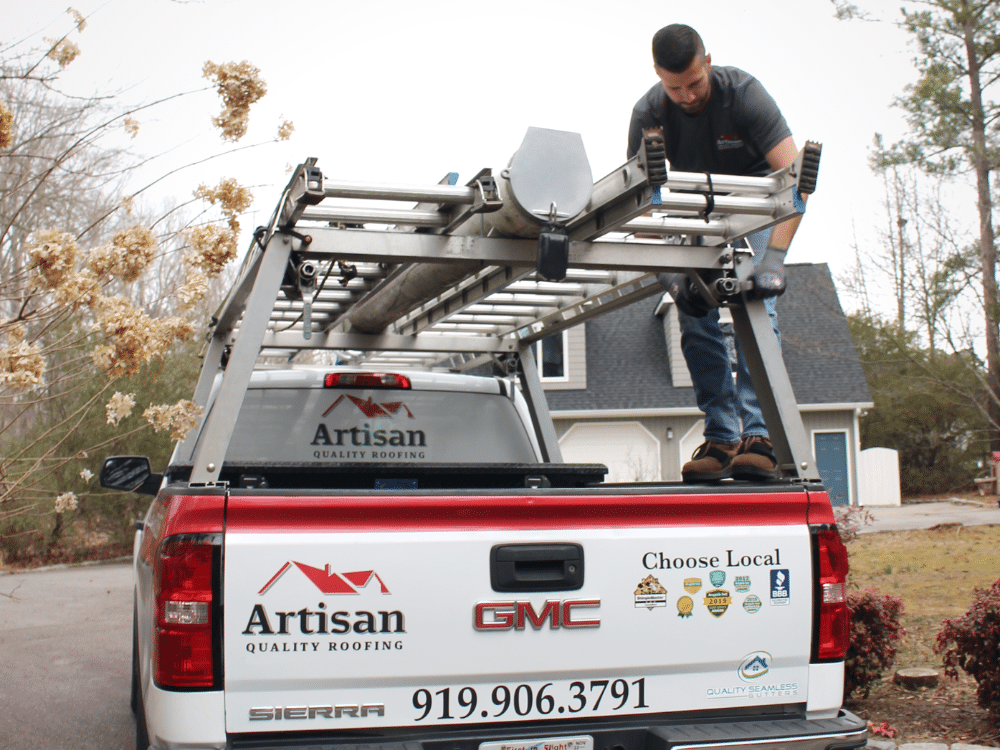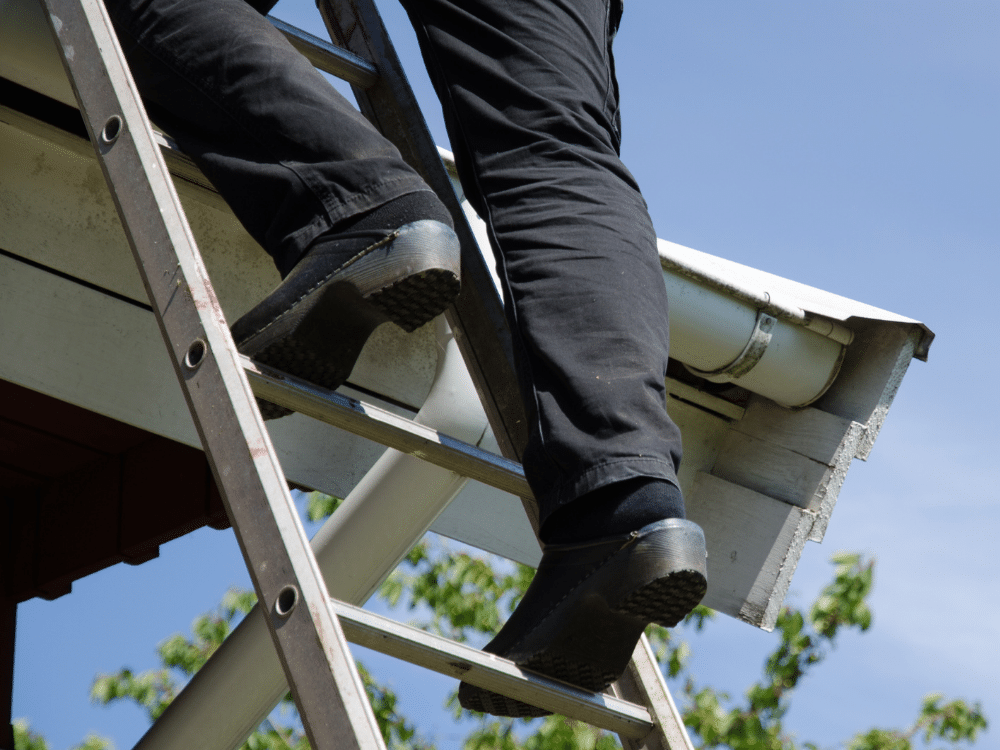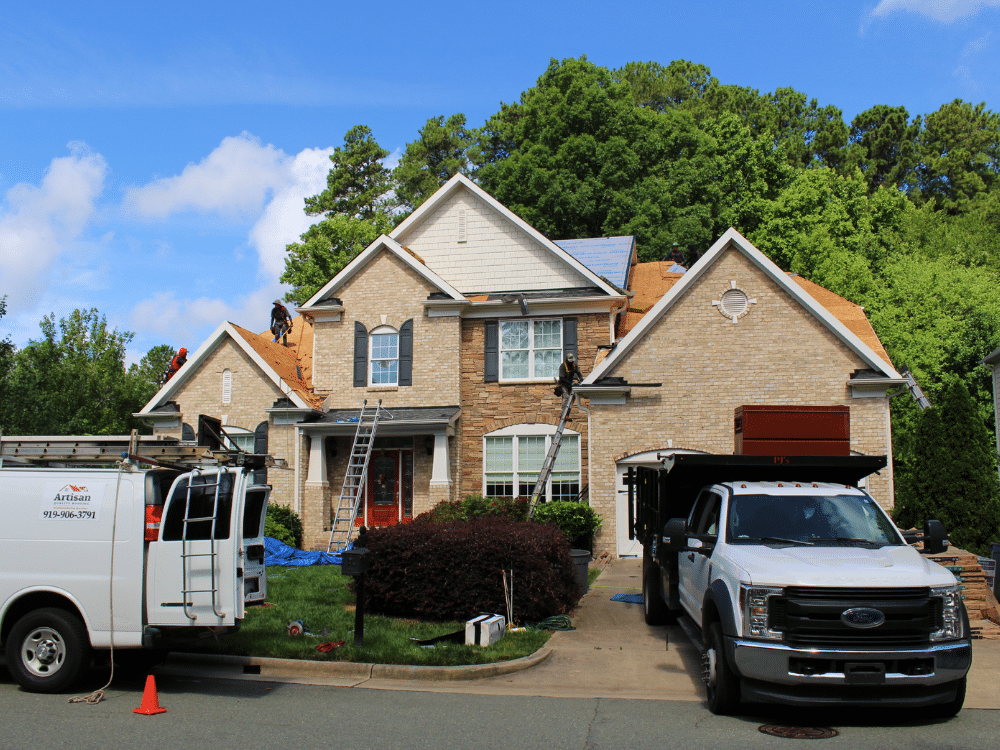
How to file an insurance claim isn’t necessarily common knowledge. There’s no need to learn how to file a claim…until there is. A storm hits; you see your neighbors replacing their roofs left and right; and you realize your roof might have damage too. So what’s next?
In our last blog post, we went over how NOT to file a claim (if you missed the post, we recommend reading it before this one).
Now that you know how NOT to file a claim, let’s go over how to file a claim…the right way! As we walk through the process, we’ll also offer some helpful advice and tips along the way.
A Quick Overview:
Step by Step:
Step 1: Awareness

Maybe a big storm just passed through your neighborhood, and there is obvious damage. Maybe someone knocked on your door and told you that your roof has damage. Or maybe you’ve started to notice your neighbors replacing their roofs with insurance. Whatever it may be, the insurance claim process always starts with the awareness that you could (or might need to) file a claim.
If there is clear, noticeable damage (e.g. a tree fall, a big water leak, missing shingles), take a few minutes to take photos of the damage. The more photo evidence you have, the better. This is especially helpful in case you end up clearing the tree or having patchwork done before you file the claim.
Step 2: Call your insurance agent
Before diving right in and filing a claim, make a quick call to your insurance company.
When you call your insurance company, ask them to walk you through the claims process step-by-step. Why? Because every company operates differently and has its own stipulations. Some companies require an estimate from a roofing contractor. Others don’t. Some companies send an adjuster to inspect your roof. Others might ask you to contact a roofer, and your insurance adjuster will do a “virtual” appointment with them.
Regardless of the process, it’s helpful to ask about it upfront so you know what to expect and what you need to do next.
Pro tip: Don’t file a claim until you have a local roofing expert inspect your roof for damage. If you file too many insurance claims (especially ones that are denied), it can negatively affect your insurance plan.
Step 3: Have a local roofing contractor inspect for storm damage

Our #1 piece of advice here? Choose your roofer; don’t let them choose you. Look at Nextdoor, neighborhood Facebook groups, Better Business Bureau, and Google reviews. Choose a quality, local roofing contractor with good reviews and referrals.
Once you choose a roofer, call and ask for a storm inspection. Let them know who your insurance carrier is, how old your roof is, and if you have any concerns about the roof. Once they inspect your roof, they’ll share their findings and let you know whether or not they recommend filing a claim.
Pro Tip: Don’t sign anything a roofer gives you until your claim is approved, and you’ve decided to go with that roofer. The most common roofing scam? The sales rep will have you sign something so they can “go on your roof,” but it’s actually a binding contract.
Step 4: File your insurance claim for storm damage.
For many insurance companies, you can file your claim online or over the phone depending on your preference. Sometimes they ask for photos, the date of the storm, or an estimate for the repairs. Figure out what they need, then request it from your roofing contractor.
You might be asking, “Why do I need to file the claim? Can’t my roofer handle all that for me?” Yes, they probably can, but you might not want them to handle it. Check out our last blog post to see why.
Pro Tip: Don’t do any major repairs until you’ve filed the claim and insurance has come out. Even if you have photo proof of the damage, they might not cover it if they didn’t get to see it prior to the repairs.
Step 5: The Adjustor Meeting

Once you file a claim, your insurance company will most likely send an adjuster to inspect your roof. Ask if they need a ladder assist, and ask your roofer if they can be present during the meeting. Remember that you and your roofing contractor both have the same goal: to get your claim approved. They will advocate for you and point out storm damage to the adjustor.
Ultimately, your insurance company has the final say, and they are thoroughly trained to inspect for storm damage. Nonetheless, by having your roofing contractor there, there is that added accountability for the inspector.
In many cases, your adjustor will let you know at the meeting the likelihood of the claim being approved. Before the adjuster leaves, ask the them when you should expect the results and how they will notify you.
Step 6: The Insurance Claim Paperwork
Once your adjuster inspects the roof, they will file their findings, and you will receive a report within a few weeks with the results.
Insurance companies have varying levels of requirements. Just because your neighbors have their storm damage claims approved unfortunately does not guarantee that you will. There are a few reasons for this:
- Insurance companies have different levels of requirements for what constitutes storm damage (AKA, some are pickier than others).
- Adjusters are people, so their inspections and findings can vary.
- Your roof’s shape, quality of installation, and direction (i.e. North, South, East, West) can all affect how a storm will damage your roof.
When insurance approves your claim, they will send you a report that outlines the damages they found and how much they will pay you to fix the damages. At this point, you can call your roofing contractor and request an estimate for the work.
You can also share the paperwork with your roofer, and they can go over it with you and answer any questions. If you are not comfortable sharing your insurance documents, you can either request a quote prior to sharing the documents or block out the pricing before sending it.
Step 7: Pick a quote & contractor

Thoroughly review any estimates you receive. Check to make sure all the roofing accessories are the same brand, verify who will be doing the physical work, and make sure the contractor isn’t cutting corners on things like flashing or drip edge. To learn more about what to look for in a contractor, sign up for a free roofing consultation.
At this point in the process, if you’ve researched your roofer, reviewed the quote, and are satisfied, then approve the quote. Done. Decision made.
If, however, you didn’t like how the roofing contractor helped you through the claims process, or you’ve decided you don’t want to choose them for the project, that’s okay too. You can call other contractors.
A good roofer doesn’t ask for your business until they walk you through the claim process.
That’s why it’s better not to sign anything until you’ve gone through the full process. If you end up not liking the first contractor you called, you aren’t obligated to work with them. You have full autonomy over who you choose for the project.
Step 8: Project and Payment
Most insurance companies provide you the funds in the form of two payments. The first payment and the “recoverable depreciation.”
Basically, the insurance company wants to make sure you use the money to actually fix the roof before they give the full payment.
A few points to verify:
- What does insurance require as proof of work done so you can receive the second check?
- When does the roofing contractor require final payment?
- How does your deductible factor into the final amount?
Note: If you have a mortgage on your home, your mortgage company may need to endorse each check before you can deposit them.
Final Step: Enjoy your roof!
Congrats on a job well done! It may sounds complicated, but trust us: as long as you do your research on which roofer to choose, your insurance company and roofing contractor will do all the heavy lifting for you.



